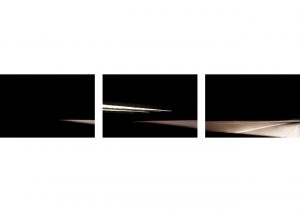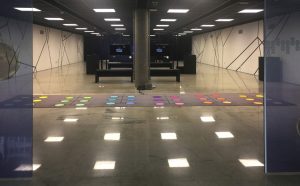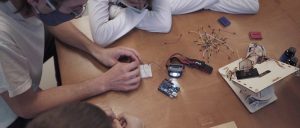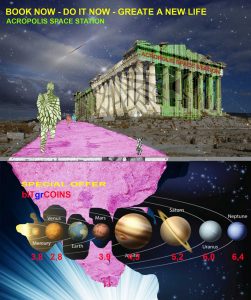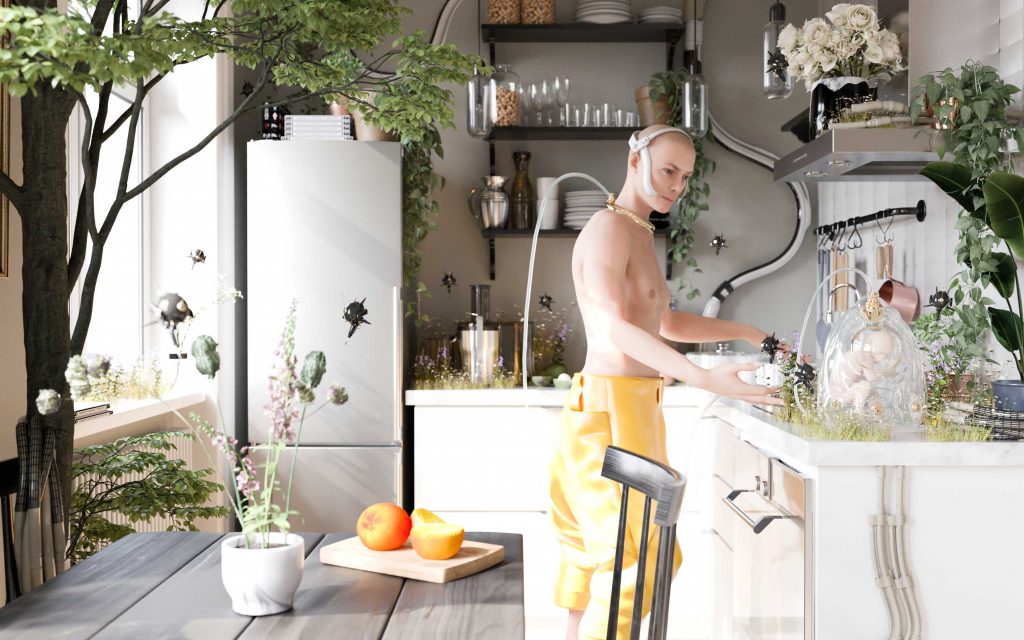
Companionship
‘’Companionship’’ is centered around the notion of reproduction as the technological and biological compatibility, of two, three or more organisms. The device allows the gestation of an embryo between two genetically incompatible organisms. In this way motherhood can be redefined in relation to the other mechanical and animate creatures, as well as in relation to the broader ecology in which they are placed into. In this way the notion of family can stop being associated to DNA and the notions of affinity and companionship can be redefined, inside a common biological matter. The creature that gestates is being directly connected to the embryo through the device, while being indirectly connected to his environment through a ‘’family’’ of drones. In this way, the creature can communicate, collecting data and interact with his surroundings, consisting of a self organised and autonomous kitchen ecology. The drones, care, water and pollinate the different plants and help with the organisation and balance of the interior ecosystem. Both the creatures and the space of the kitchen constitute an undivided and unique ecology, where the boundaries and physical limits between the bodies are liquid and fluid, open to mutual interconnections and inter-affiliations among them.
George Ouzounis (GR)
George Ouzounis was born and raised in Thessaloniki. He completed his studied in Architecture at Technical university of Crete at 2020 and since he lives and works in Athens, both as an architect and conceptual 3D Render Artist. His work includes different media, in between 3D Scan, Render, photography and Video. The last 2 years he is working on his ongoing project ‘’Super Gonorrhea‘’ where he creates fantastic chimeras and worlds that draw inspiration from the (post)-human body, gender and sexuality. His works are always situated inside an artificial or natural ecology. ‘’My practise is based on the relations between bodies and their mutual dependance and co – existence inside the broader systems, ecosystems and ecologies in which they are situated into. Essentially, it is placed in between the artificial and the natural, in between nature and technology or simply between reality and a fantasy. In parallel, my practise aims to understand and analyse the contemporary complexity of our world and to structure a different and more positive post-human scenario in relation of how we want to look on upon ourselves in the future’’.

